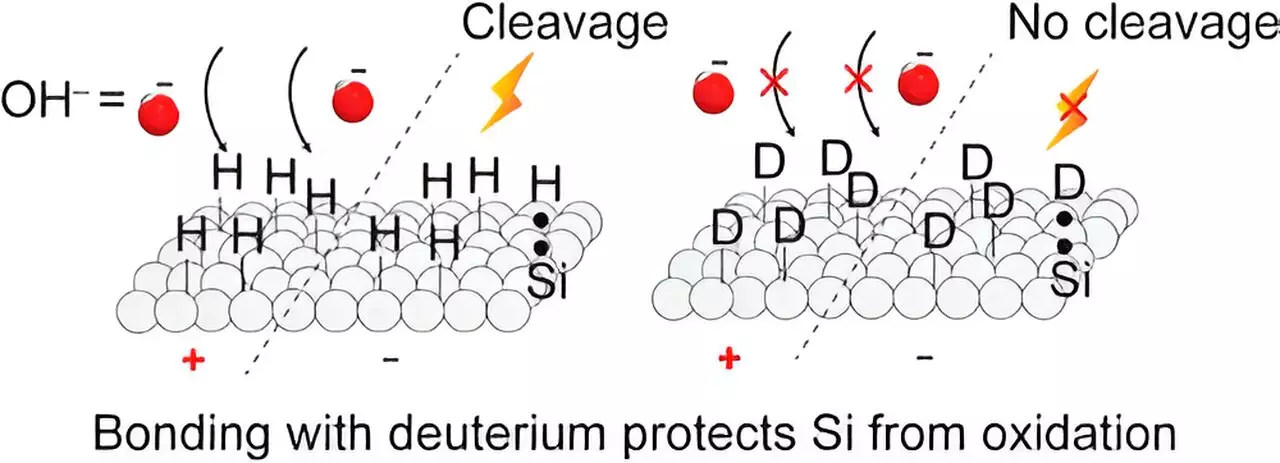Silicon has been a crucial material in the electronic industry for decades, but researchers are constantly seeking ways to improve its properties and stability. In a groundbreaking collaboration, two brothers from different scientific fields, Dr. Tamim Darwish and Dr. Nadim Darwish, joined forces to explore the potential of deuterium in enhancing silicon’s performance. Their research, published in ACS Applied Materials & Interfaces, reveals promising results that could revolutionize the design of silicon-based devices.
One of the primary challenges in utilizing silicon for various applications, such as sensors, solar cells, and molecular electronic devices, lies in the vulnerability of silicon-hydrogen (Si−H) surfaces to oxidation. This oxidation not only compromises the mechanical and electronic stability of the devices but also reduces their lifespan. Finding a solution to this issue is a critical step in advancing silicon technology.
Dr. Tamim Darwish, a leading scientist at the National Deuteration Facility (NDF), utilized his expertise in deuterium, an isotope of hydrogen, to propose a solution. Deuterium is known for its unique properties, and replacing hydrogen with deuterium on the surface layer of silicon shows promise in improving its resistance to oxidation. By creating silicon-deuterium (Si−D) surfaces, the researchers observed enhanced stability and consistent electrical characteristics compared to Si−H surfaces.
The findings of the Darwish brothers’ research have far-reaching implications for multiple industries. The stability and reliability of Si−D surfaces make them ideal for applications that require non-oxidized silicon surfaces. Electrochemical biosensors, silicon-based molecular electronic devices, and silicon-based triboelectric generators can benefit greatly from the use of Si−D surfaces. By incorporating deuterium, these devices can maintain their performance over extended periods, leading to more robust and efficient technology.
The surface isotope effects discovered in this study have the potential to revolutionize the design of silicon-based devices. By incorporating Si−D surfaces, scientists can ensure a higher level of stability, improving the overall performance and longevity of the devices. This breakthrough opens doors for advancements in molecular electronics, power generation devices, and other silicon-based technologies.
In addition to its direct implications for device design, the research findings also impact the interpretation of charge transport characteristics in silicon-based devices. Understanding the behavior of charge transport is crucial for optimizing device performance and unlocking new possibilities in electronic applications. The use of Si−D surfaces provides researchers with a more reliable foundation for studying and improving charge transport in silicon-based systems.
The collaborative efforts of Dr. Tamim Darwish and Dr. Nadim Darwish have shed light on the untapped potential of deuterium in enhancing silicon technology. By replacing hydrogen with deuterium on silicon surfaces, researchers can achieve greater stability and consistent performance in a wide range of applications. The breakthrough findings pave the way for further exploration and innovation in the field of silicon-based devices, offering a brighter future for electronic technology.


Leave a Reply